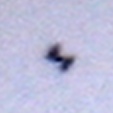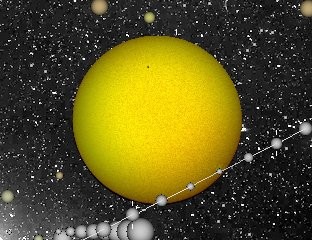Date: 2013-08-06

The International Space Station orbits around the Earth 15 times in a day. For this reason it moves very quickly in the sky and it is impossible to follow it with a common amateur telescope mount. However it is possible to photograph it in particular situations, for example when it transits in front of the Sun or the Moon. One could think this transits are very rare, but actually they happens several times in a year in the same place. The main problem is that these transits can vary a lot depending on the observer position (few kilometers and the transit could be not visible anymore).
But a beautiful site can help us: calsky.com
On Calsky.com it is possible setting the observer location and calculating the ISS transits for the next 2 months. I suggest you to register because I saw that otherwise your settings tend to be lost. Moreover as a registered user you can ask the site to alert you by e-mail when a transit happens near your home.
When you specify the position try to be as accurate as possible, inserting not only the city but also the address.
When the transit data is computed you can click on the "ISS" link to see a sky map that contains the ISS trajectory. The trajectory could not be completely exact, instead the expected time seems to be very accurate. The precision on provided data increases in the last days before the transit, so I suggest you to check the transit forecast again some hours before it should happen.

ISS transits are very short: usually less than 1 second. So there are mainly 2 options to photograph them:
- filming them;
- exploiting the «continuous shooting» option of a reflex;
Regarding the second option a reflex should be able to do at least 3 shots per second to have a good chance to photograph the ISS. To avoid filling the entire memory card of your reflex you should be as accurate as possible about the time. I suggest you to synchronize your clock with a standard clock (you can find various services doing this on the Internet).
I usually start the continuous shooting mode about 30 seconds before the expected transit time, but the first time I photographed the ISS I set a lower resolution on the reflex and I started the process some minutes before the expected time. When I checked the photos times I noticed that I had obtained a one second precision, so you shouldn't be worried: calsky.com is very accurate!